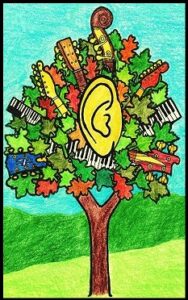 If you’re going to call yourself a professional musician, it’s a good idea to learn at least the basics of reading and writing music. Free programs like Musescore make writing music easy. However, as a practical matter, reading staff notation is optional for many, if not most, modern musicians. Many professional settings, like recording and performing dates, rely heavily on spontaneous interpretation, and sometimes on improvisation by the individual musicians.
If you’re going to call yourself a professional musician, it’s a good idea to learn at least the basics of reading and writing music. Free programs like Musescore make writing music easy. However, as a practical matter, reading staff notation is optional for many, if not most, modern musicians. Many professional settings, like recording and performing dates, rely heavily on spontaneous interpretation, and sometimes on improvisation by the individual musicians.
Prior to the mid-1960s, there was usually an arranger who wrote charts in staff notation for the individual musicians. The arranger told the studio musicians more or less exactly what to play. That changed with the emergence of rock. Today the traditional role of the arranger, separate from writers, musicians and producers, has almost completely disappeared.
Music schools can prepare you to walk into the top New York and LA recording studios. But the most common bread-and-butter studio work is arranging for songwriters, and most songwriters don’t read or write staff. The songwriter might not bring anything to the session but a guitar and lyrics on a napkin. It’s up to you to take it from there.
There are many situations where writing out your parts beforehand is impossible, or just doesn’t make sense. In most rock recording sessions, the only written music is in the form of chord charts, not staff notation. That means reading music doesn’t give you any advantage over someone who doesn’t. Recording modern music usually relies on the group chemistry and the expertise of the musicians. It usually doesn’t make sense to have an arranger decide everything. It isn’t practical for one person to score each instrument part.
In many situations, your value as a musician depends on your ability to spontaneously arrange you musical parts with a group. “Auto-arrange,” is musicians’ slang for creating a spontaneous group arrangement of a song. It’s so universal in the modern music world that many musicians don’t have a name for it. It’s the standard operating procedure for modern musicians. For rock, country and jazz groups, it’s the main way of recording and performing music.
In some of the most memorable, best-loved music ever recorded, staff notation played a much smaller role than the real-time creative input of the individual musicians. Sometimes, staff notation played no role at all. Many of the most historic, iconic rock and pop songs from the 1960s and 70s were recorded by musicians using only chord charts, and sometimes not even that. For many pro players, reading staff just isn’t a part of their day-to-day routine. There just aren’t that many sight-reading gigs left in the world.
Guitar players (in non-academic settings) whose teachers force them to read music should ask what future their teacher is preparing them for. Professional players in cover bands almost never use the lead sheets or tablature books they sell in music stores. Those books are all published for the lesson market.
Succeeding in the world of classical music depends on your ability to read music. The world of modern music is mostly non-reading, where the creative process is concerned. In the modern music world, staff notation is often written after the fact.
It all goes to show the importance of learning to play music by ear.
© 2019, 2020 by Gregory Varhaug